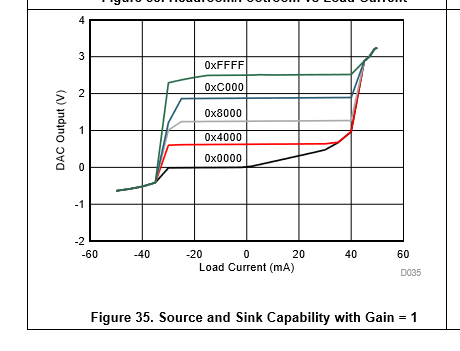Other Parts Discussed in Thread: OPA4388, DAC81408
Hello,
I have a customer that wants to use the DAC80508 with a load potentially as low as 66 Ohm. When the output is at full scale 2.5V, this could result in ~38mA.
I'm confused if this is within the capabilities of the part. The front page says 20mA, the EC table says short circuit current is 30mA on page 8, and this graph shows current capability up to 40mA.
- Would this device be able to supply around 35mA on all eight channels when the output voltage is 2.5V and supply voltage is 3.3V?
- If not, do we have a 16b octal DAC that could? (I wasn't able to find anything. Maybe two quads?).
- If still no, what is the best work around? Would we have to put a unity gain op-amp on the DAC outputs?
- I'm assuming we would want the offset voltage of that op-amp to be less than 1 LSB (38uV).
- Two pieces of OPA4388?
Thank you!
Regards,
Ryan B.



